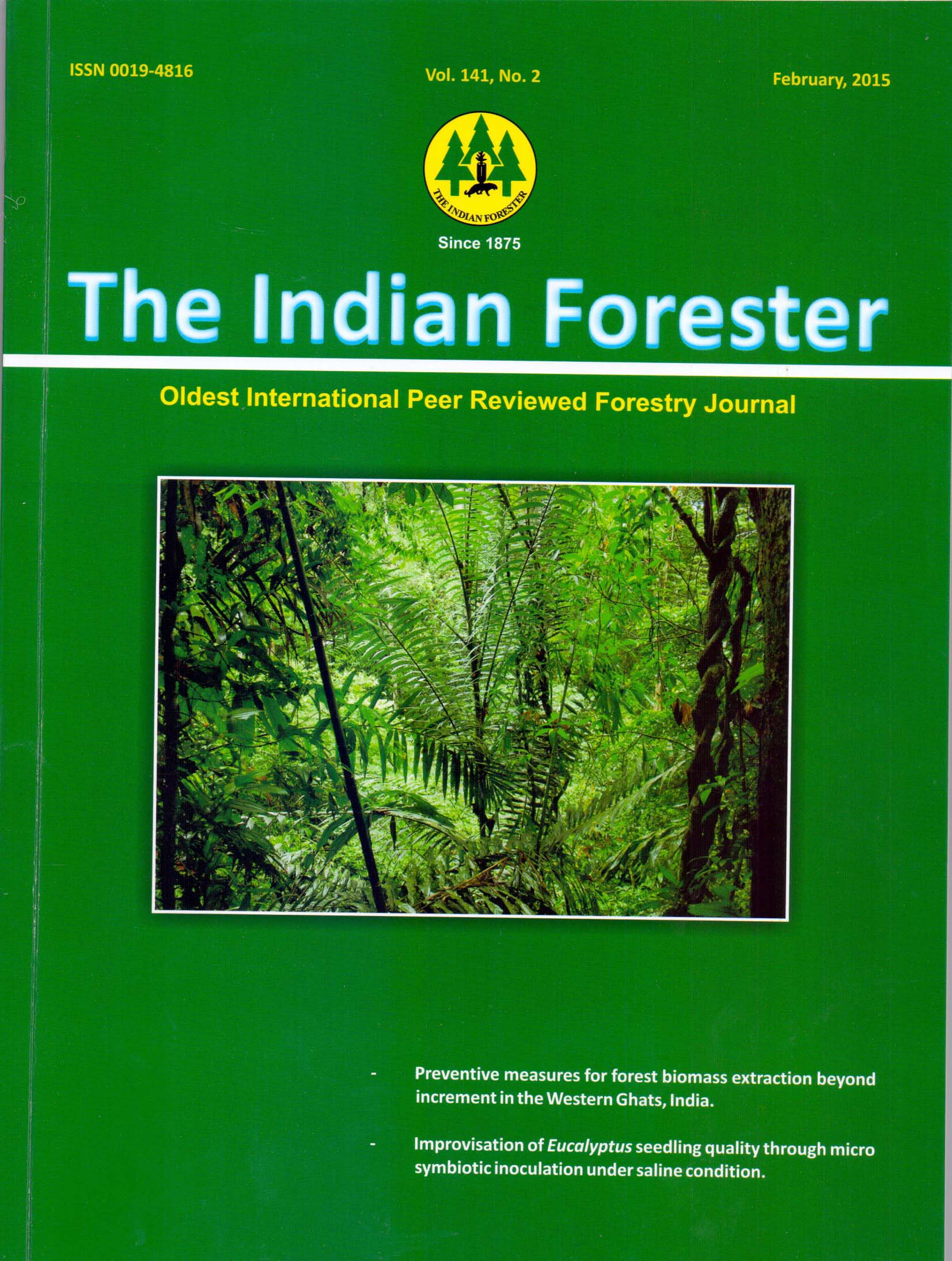Wood Anatomy of Croton L. (Euphorbiaceae) Reflecting Systematic, Ecological and Evolutionary Aspects
DOI:
https://doi.org/10.36808/if/2015/v141i2/60651Keywords:
Croton, Euphorbiaceae, Wood Anatomy, Crotonoideae, Systematic, Ecological, Evolutionary.Abstract
Wood microstructure with systematic, ecological and evolutionary aspects of six species of Croton L. (Euphorbiaceae) from India is described. Wood is diffuse porous, radial multiples of 4 or more common with some short radial multiples and solitary vessels. Perforation plate simple, intervessel pits rounded and alternate. Fibre libriform, non-septate and thin to thick walled. Parenchyma apotracheal, diffuse to diffuse in aggregate and reticulate or narrow banded. Rays heterocellular, containing non-chambered prismatic or rhomboidal crystals and druses. Disjunctive ray parenchyma walls and perforated ray cell observed. C. scabiosus and C. malabaricus show distinctness in some ray and vessel characteristics. Species show adaption to highly mesic condition except C. scabiosus. Few remnants of wood anatomy are evident of both primitive and advance characters in this genus. Systematic wood anatomical survey shows its close relation to subgenus Croton and distance relation to subgenus Moacroton and sister groups of genus Croton, such as, Cubacroton, Brasiliocroton, Acidocroton and Astrea.References
Alves E.S., and Angyalossy-Alfonso V. (2002). Ecological trends in the wood anatomy of some Brazilian species, axial parenchyma, rays and fibres. IAWA J, 23: 391-418.
Baas P., Werker E., and Fahn A. (1983). Some ecological trends in vessel characters. IAWA Bull, n.s. 4: 141-159.
Barajas-Morales J. (1985). Wood structural differences between trees of two tropical forests in Mexico. IAWA Bull, n.s. 6: 355-364.
Berry P.E., Cordeiro I., Wiedenhoeft A.C., Vitorino-Cruz M.A., and Lima L.R.De. (2005a). Brasiliocroton, a new crotonoid genus of Euphorbiaceae S.S. from Eastern Brazil. Systematic Botany j., 30 (2): pp. 357-365.
Carlquist S. (1975). Ecological strategies of xylem evolution. University of California press, Berkeley.
Carlquist S. (1977). Ecological factors in wood evolution: A floristic approach. American J. Bot., 64 (7):887-896.
Carlquist S. and Hoekman D.A. (1985). Ecological wood anatomy of the woody southern Californian flora. IAWA Bull, n.s., 6: 319-347.
Carlquist S. (1988). Comparative wood anatomy: systematic and evolutionary aspects of dicotyledon woods. Springer Verlag, Berlin, Germany.
Gamble J.S. (1922). A manual of Indian timbers. 2nd ed., Sampson Low and Marston Co.Ltd, London.
Govaerts R., Frodin D.G., and Radcliffe-Smith A. (2000). World checklist and bibliography of Euphorbiaceae. 4 vols. Kew: Royal Botanic Gardens.
IAWA Committee. (1989). IAWA list of microscopic features for hardwood identification. IAWA Bulletin, n.s. 10: 219-332.
Kribs D.A. (1935). Salient lines of structural specialization in the wood rays of dicotyledons. Bot. Gaz., 96: 547-557.
Luchi A.E., Silva L.C.P., and Moraes M.A. (2005). Anatomia comparada do lenho de Xylopia aromatica (Lam.) Mart. em Areas de cerrado e de plantação de Pinus elliottii Engelm. Braz. J. Bot., 28: 809-820.
Rury P.M. (1985). Systematic and ecological wood anatomy of erythroxylaceae. IAWA Bull. ns 6: 365-397.
Webster G.L. (1993). A provisional synopsis of the sections of the genus Croton (Euphorbiaceae). Taxon, 42: 793-823.
Weidenhoeft A.C., Benjamin V.E. and Berry P.E. (2008). Tracking the phylogeny of Crotoneae with comparative wood anatomy of Croton. University of Wisconsin, Madison.
Wiedenhoeft A.C., Riina R. and Berry P.E. (2009). "Ray-intrusive" laticifers in species of Croton section Cyclostigma (Euphorbiaceae). IAWA journal, 30 (2): 135-148.
Yatsenko- Khmelevskyi A.A. (1954). Osnovy i metody anatomicheskogo issledovaniya drevesiny (Principals and method of anatomical investigation of wood). Izdatel’stvo akademii Nauk SSSR, Moscow-Leningrad 337 p
Zimmermann M.H. (1983). Xylem structure and the ascent of sap. Springer-Verlag, Berlin.
Downloads
Downloads
Published
How to Cite
Issue
Section
License
Unless otherwise stated, copyright or similar rights in all materials presented on the site, including graphical images, are owned by Indian Forester.





